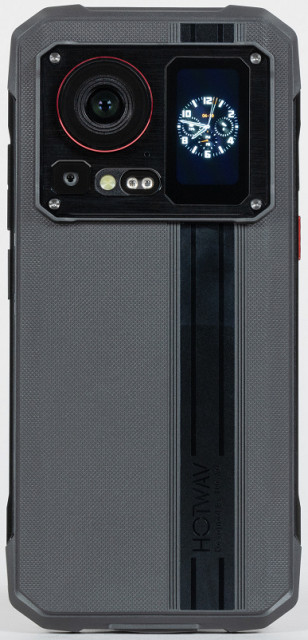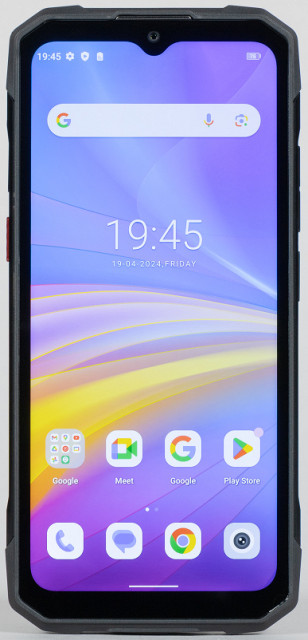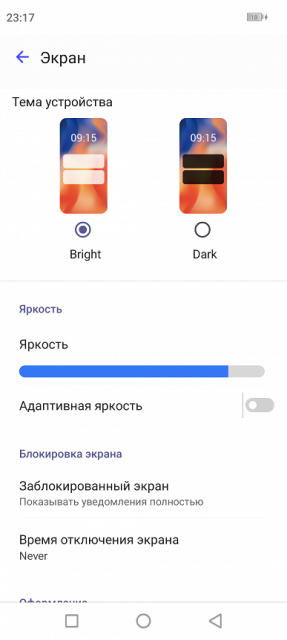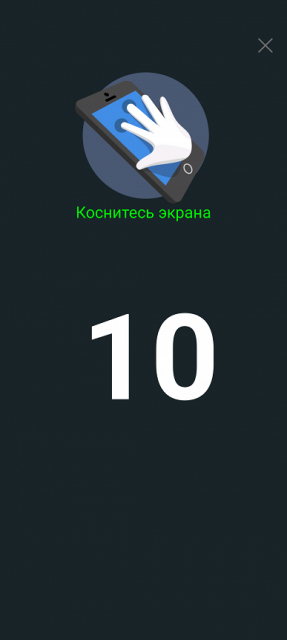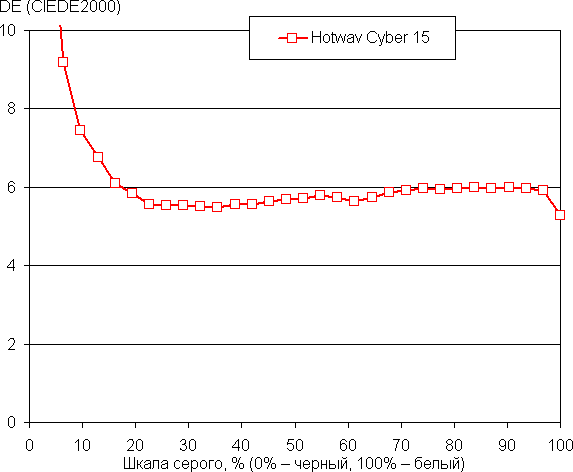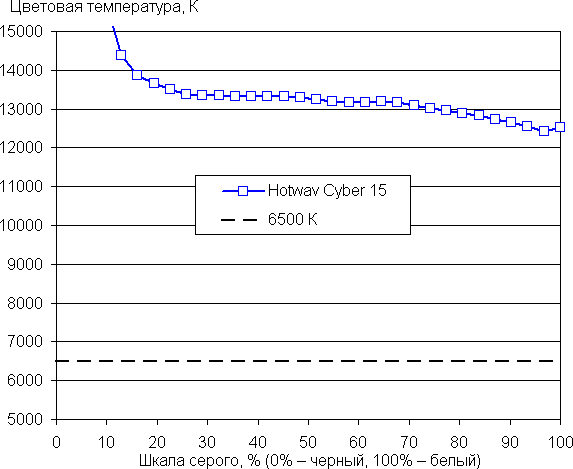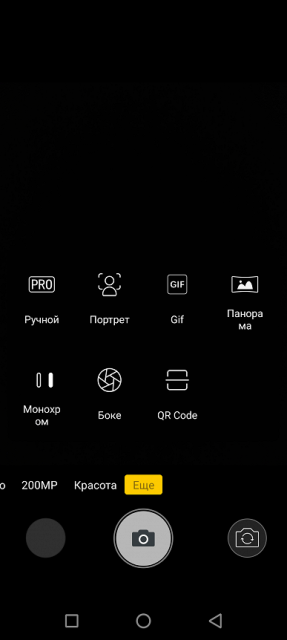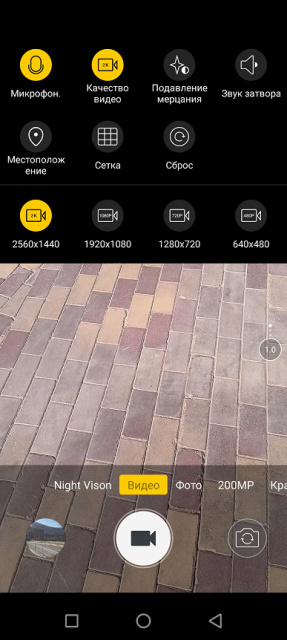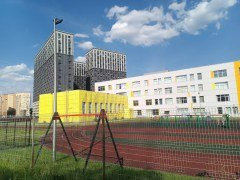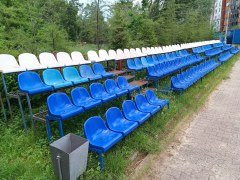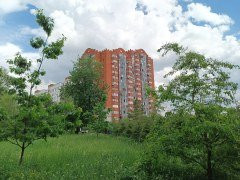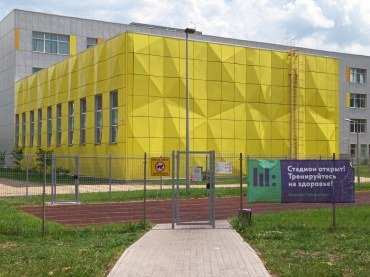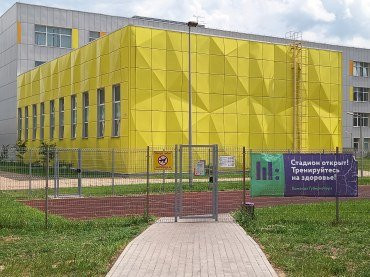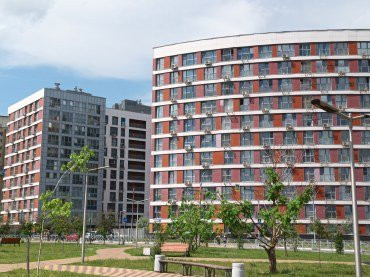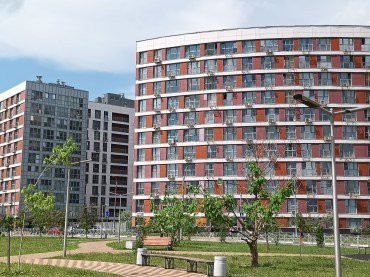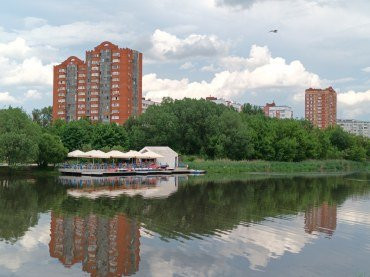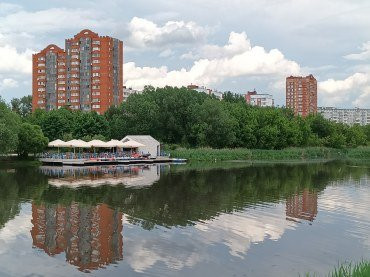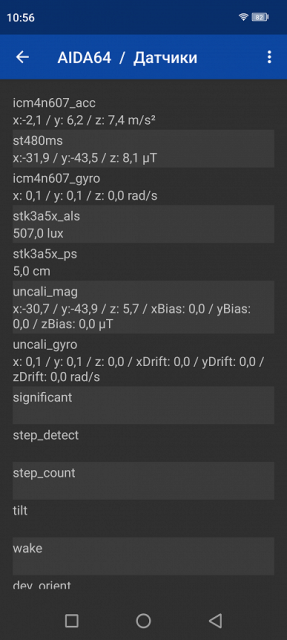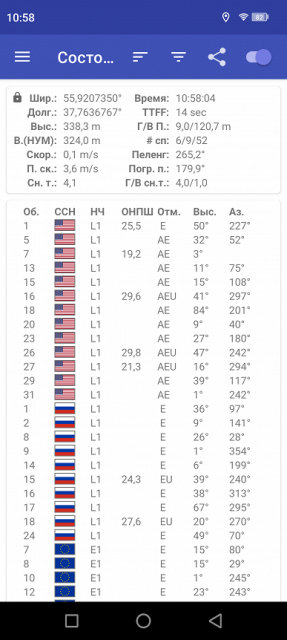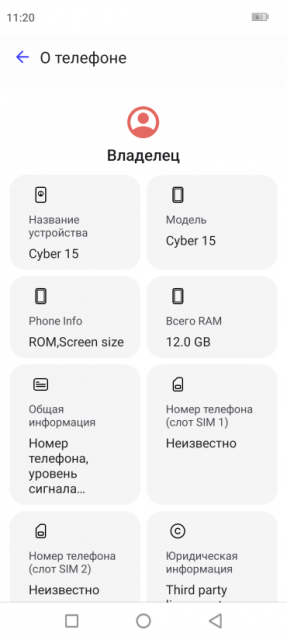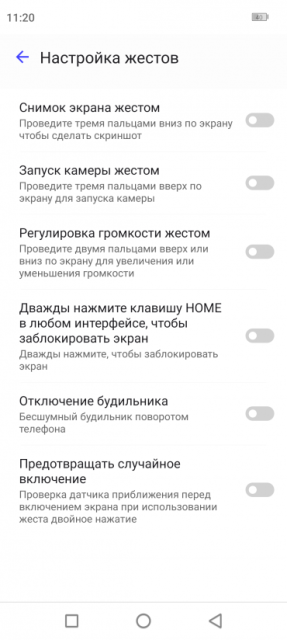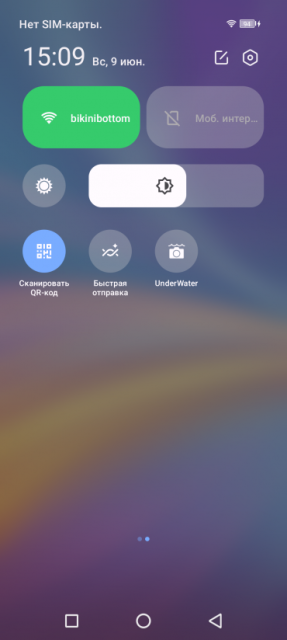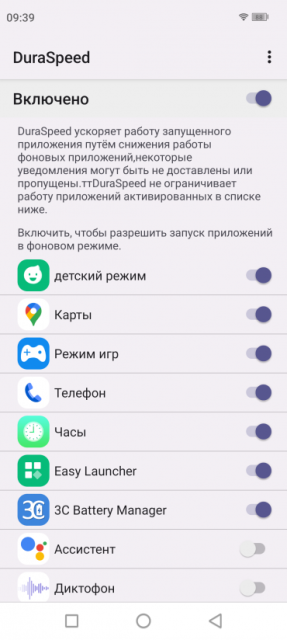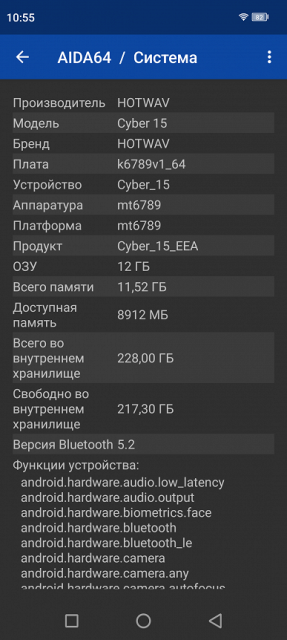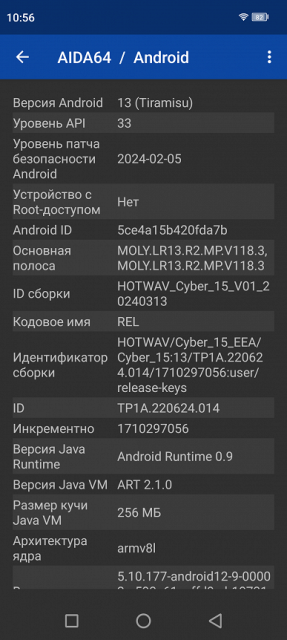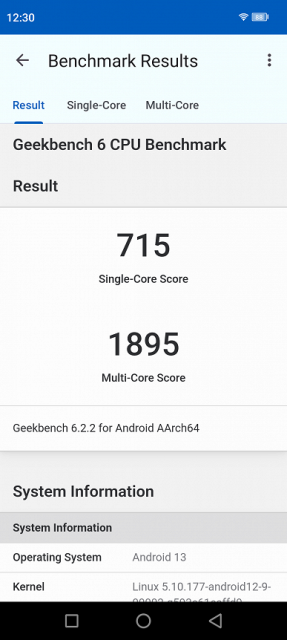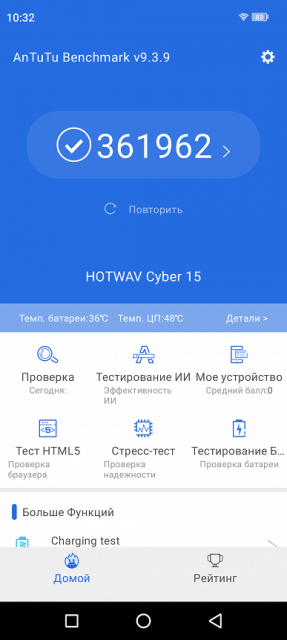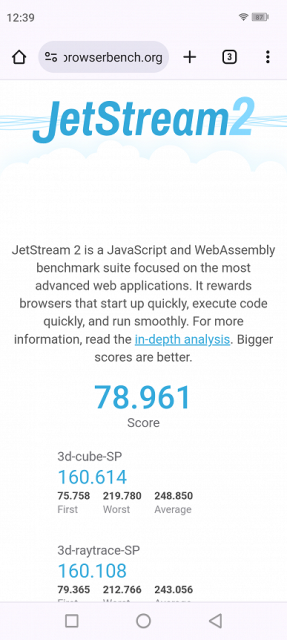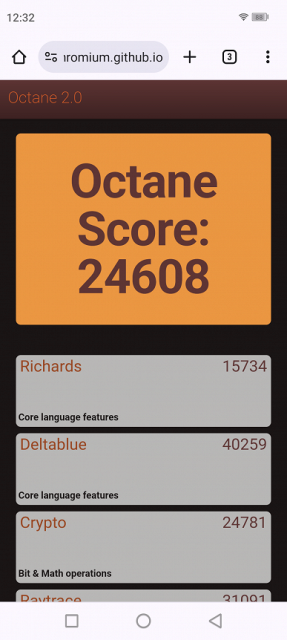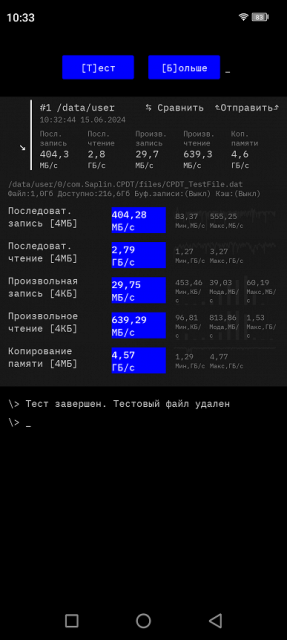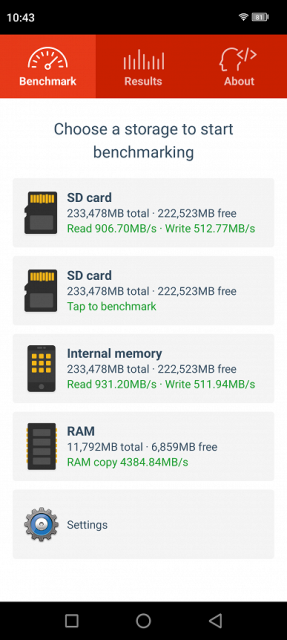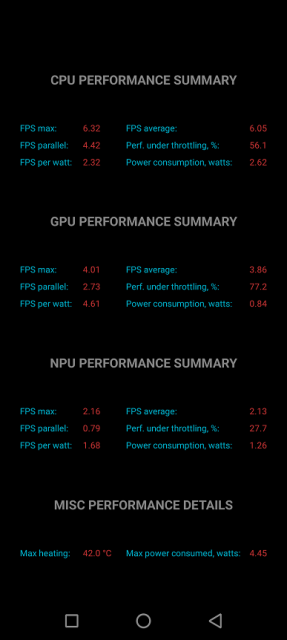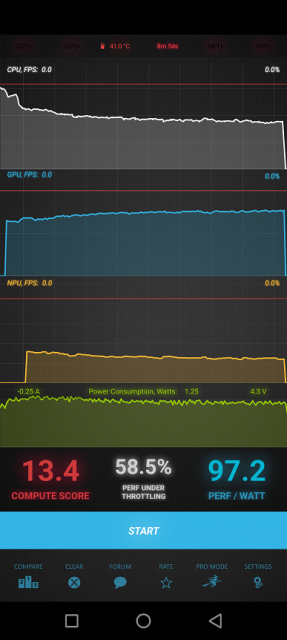The Chinese company Hotwav specializes in the production of smartphones designed for use in extreme conditions, and the new Hotwav Cyber 15 is no exception. According to the official specifications, the device has an impressive set of technical capabilities. Let's check how much this corresponds to reality.
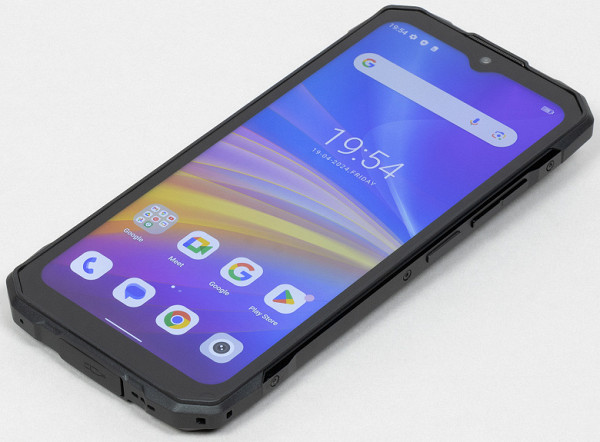
Main Features of Hotwav Cyber 15
- SoC Mediatek Helio G99, 8 processor cores (2×Cortex-A76 @2.2 GHz + 6×Cortex-A55 @2.0 GHz)
- GPU Mali-G57 MC2
- OS Android 13
- IPS touchscreen, 6.6″, 1080×2408, 20:9, 400 ppi, 120 Hz
- Additional touchscreen IPS, 1.45″, 240×240
- RAM 12 GB, internal memory 256 GB
- Support microSD up to 2 TB
- Support Nano-SIM (2 pcs.)
- Networks 2G GSM, 3G WCDMA, 4G LTE
- GPS, GLONASS, BDS, Galileo
- Wi-Fi 5 (2.4 and 5 GHz)
- Bluetooth 5.1, A2DP
- NFC
- USB 2.0 Type-C, USB OTG
- no 3.5 mm audio output for headphones
- Cameras 200 MP + 24 MP (night), video 1440p@30 fps
- Front camera 32 MP
- Proximity and light sensors, magnetic field, accelerometer, gyroscope
- Fingerprint scanner (side)
- Battery 6280 mAh, charging 33 W
- Dimensions 175×82×12.8 mm
- Weight 292 g
Appearance and ease of use
The Hotwav Cyber 15 smartphone comes in a flat cardboard box and comes with a set of accessories including a standard USB cable, a 33W USB Type-C wall charger, a screen protector, and a USB OTG cable for reverse wired charging of other mobile devices from the smartphone.
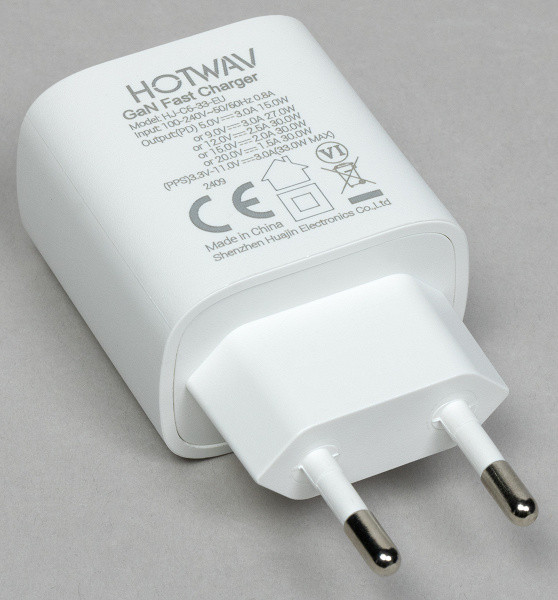
The smartphone's body is designed in a style suitable for rugged models: it looks rough and brutal, without varnish and gloss, with a textured coating and rubber bumpers. It fits securely in the hand, does not slip and does not collect fingerprints. The design is more restrained compared to those «spiky» options that were popular with rugged smartphones in the past. In general, the device is well suited for an urban environment, although its weight of almost 300 grams can be felt in the pocket.
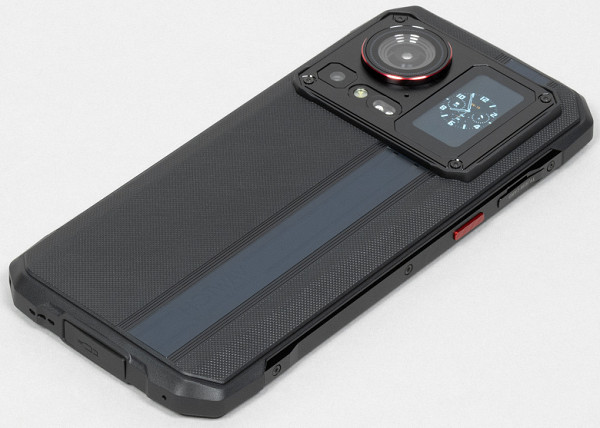
The smartphone body is protected according to IP68 and IP69K standards, as well as the military standard MIL-STD-810H, providing reliable protection against water, dust and impacts. This is achieved thanks to thick rubber pads, reinforced corners and metal plates screwed on the sides. The back panel has a rough texture with a rubberized coating and a stylish strip, which makes it neat and unobtrusive. In general, the smartphone looks solid and decent. The front glass is flat and made of Corning Gorilla Glass 3.
On the back panel of the smartphone, which is also screwed with screws, there is not only the main and additional camera with flash, but also an additional touch screen. This screen is colored and equipped with a set of dials that display notifications about incoming calls and messages from applications such as WhatsApp and Telegram. It also provides quick access to camera and music application control functions, and shows information about battery charge and the number of steps taken. Although the official screen resolution is 240x240 pixels, in reality it looks elongated.
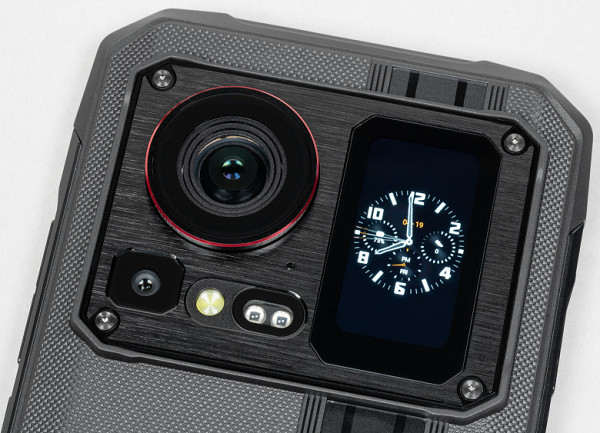
The side buttons of the smartphone are wide and comfortable, but too soft. Considering the possible use of the device in off-road conditions, they should be made more rigid. On the opposite side from the main buttons is an additional programmable button, to which various functions can be assigned, such as turning on the flashlight, taking a screenshot or sending an SOS signal. It recognizes both short and long presses.
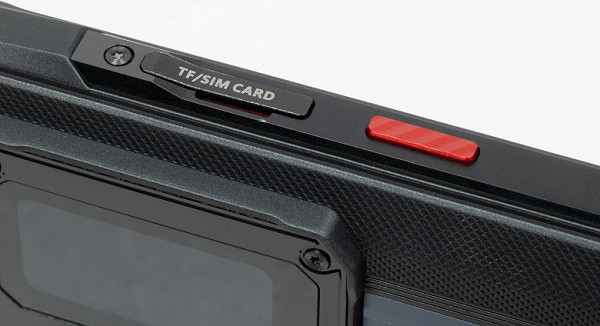
The single front camera is housed in an old-fashioned teardrop-shaped notch on the screen.
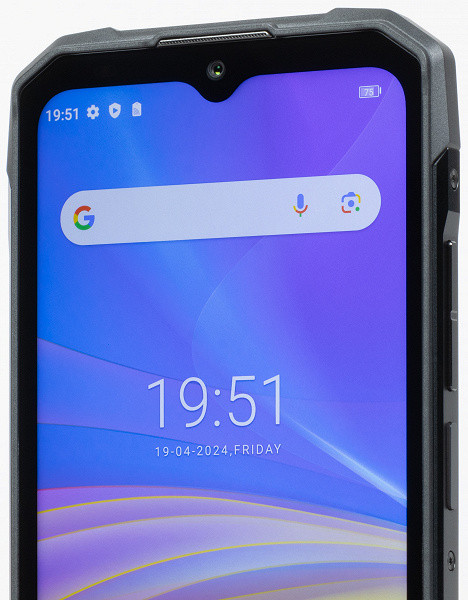
The fingerprint scanner is located in the flat power and lock button. The sensor is capacitive, works clearly and quickly, there are no complaints about it.
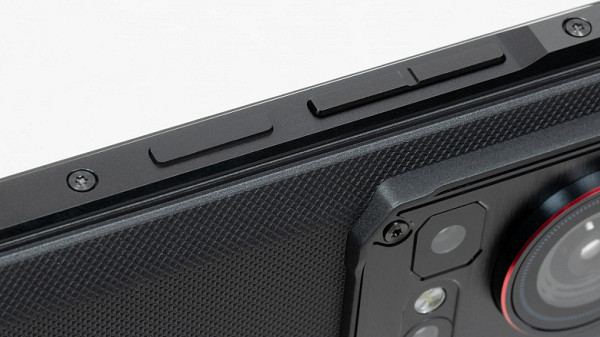
The tray can accommodate two Nano-SIM cards or replace one of them with a microSD memory card.
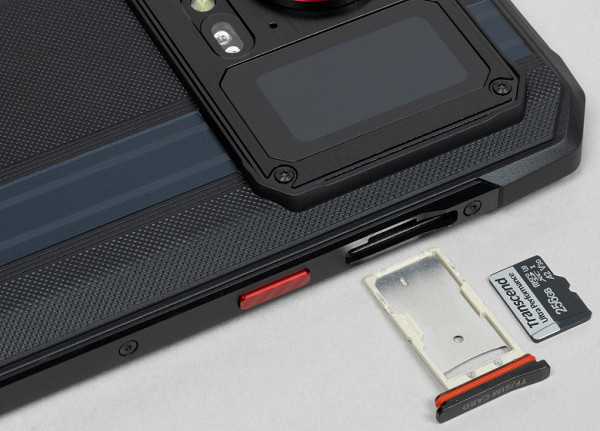
The top end houses only an additional microphone. The bottom end houses a speaker, microphone, and USB Type-C connector, which is protected by a tight-fitting rubber plug. The plug is difficult to remove with a fingernail, so you'll need a third-party tool, such as the included «paper clip.»
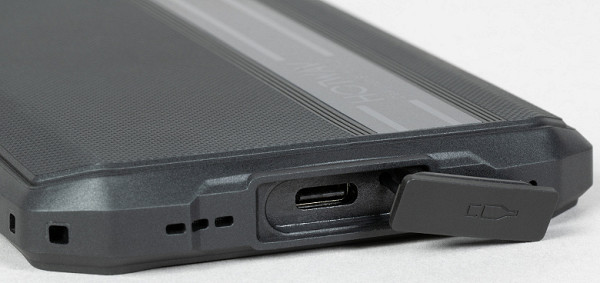
The smartphone is available in two colors — black and bronze. Its body is protected according to IP68 and IP69K standards, as well as the military standard MIL-STD-810H, providing reliable protection against water, dust and shock.
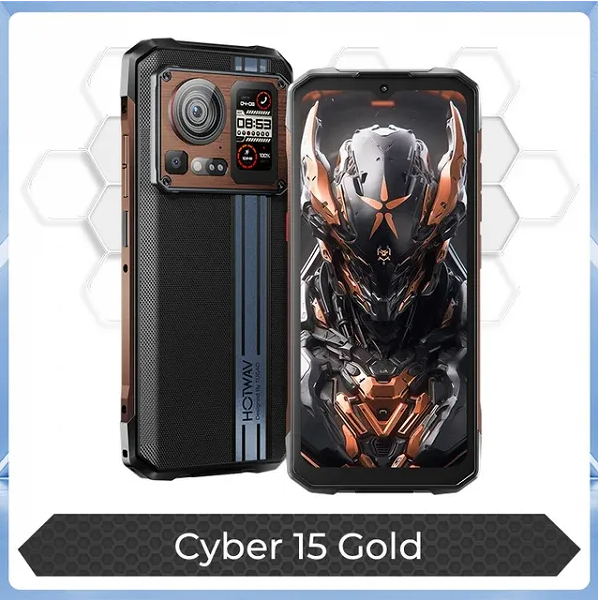
Screen
The Hotwav Cyber 15 smartphone is equipped with a 6.6-inch IPS display with a resolution of 1080×2408 pixels, which is protected by flat Corning Gorilla Glass 3. The screen has dimensions of 69×153 mm and a pixel density of 400 ppi. A refresh rate of 120 Hz is supported.
The front surface of the screen is a glass panel with a mirror-smooth texture, resistant to scratches. The anti-glare properties of the screen are slightly better than those of the Google Nexus 7 (2013), which makes it more comfortable to use even in bright sunlight. The oleophobic coating effectively repels grease and reduces the number of fingerprints, making them easier to remove.
The maximum screen brightness when displaying a white field is 490 cd / m², which provides sufficient visibility outdoors, despite the not very high brightness values. The minimum brightness is 20 cd / m², which allows you to comfortably use the screen in complete darkness. Automatic brightness adjustment using the light sensor (located to the left of the front speaker grille) changes the brightness depending on the lighting conditions. However, the auto-brightness function sometimes does not work quite adequately: in bright office lighting conditions, it can set the brightness too high, and when changing the settings, the brightness in bright light may become insufficient. In any case, there is no backlight modulation at any brightness level, so there is no screen flickering.
The smartphone is equipped with an IPS matrix, and microphotographs show the subpixel structure typical for this type of matrix.
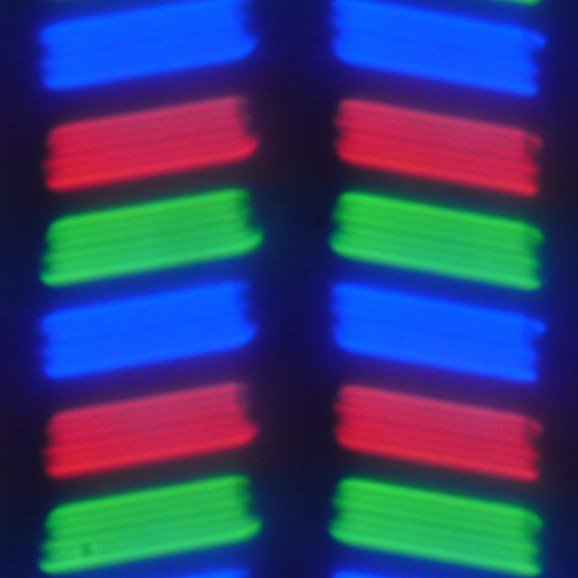
The screen on the back also uses an IPS matrix:
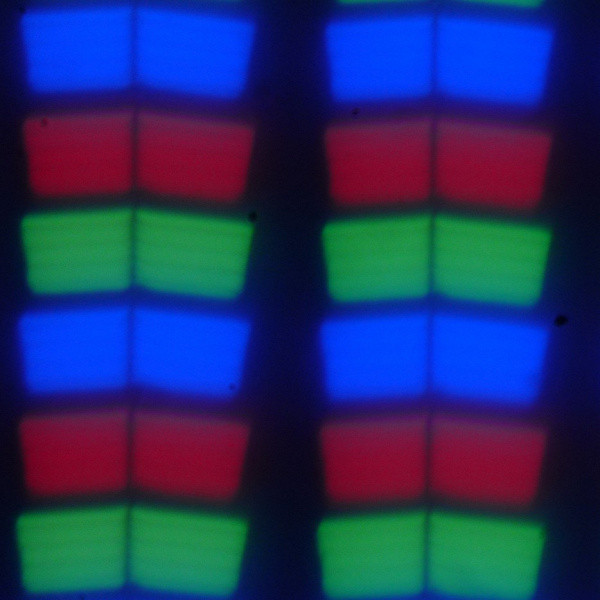
Since this screen is an auxiliary one, we will not conduct a thorough testing of it.
We provide photos in which the same images are displayed on the screens of the smartphone and Nexus 7. The brightness of the screens is set at about 200 cd/m², and the color balance on the camera is set to 6500 K.
White field:
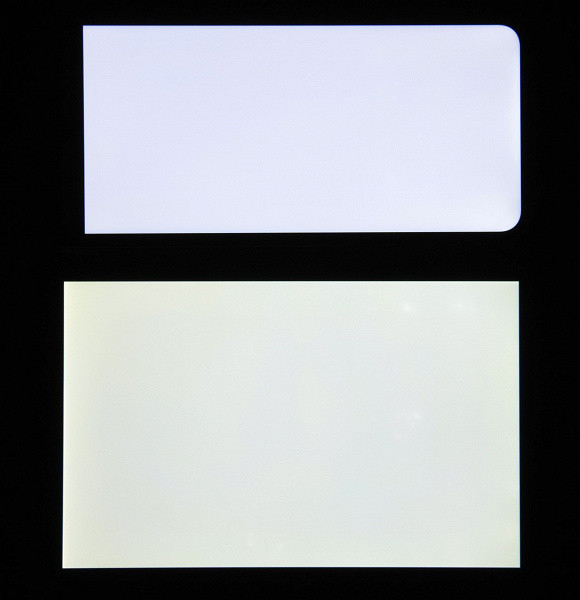
Note the good uniformity of brightness and color tone of the white field.
And the test image:

The colors on the screen are slightly oversaturated, and the color balance is noticeably different — the image on the smartphone looks darker. Let us remind you that the photo cannot serve as an accurate indicator of the quality of color rendering and is provided only for conditional illustration. This is due to the fact that the spectral sensitivity of the camera matrix does not coincide with the peculiarities of color perception by the human eye.
The smartphone screen demonstrates good viewing angles without significant color distortion even with large deviations of the gaze from the perpendicular to the display surface, and no inversion of shades is observed. However, at diagonal viewing angles, the black field noticeably lightens and acquires a purple tint.
When looking directly, the uniformity of the black field remains at a decent level (for clarity, the backlight brightness on the smartphone was increased).
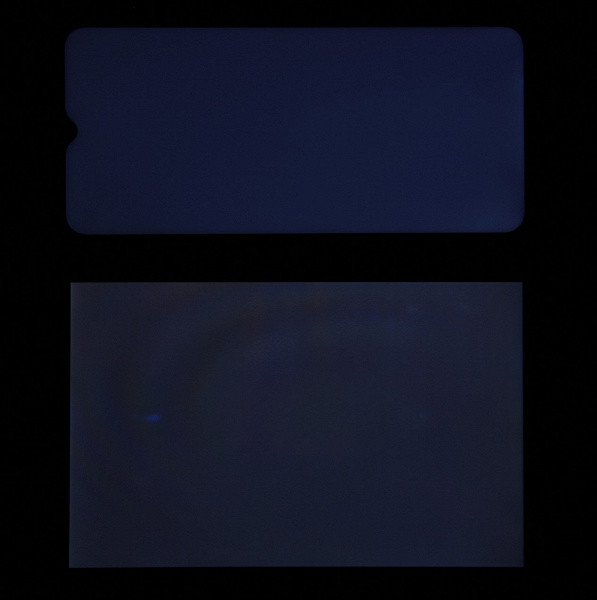
The contrast ratio of the screen, measured approximately in the center, is about 1300:1. The response time from black to white and back is 19 ms (10 ms on + 9 ms off). The transition between 25% and 75% gray halftones and back takes 29 ms. The gamma curve, constructed using 32 grayscale points, shows no problems in light and dark areas. The exponent of the approximating power function is 2.43, which is higher than the standard value of 2.2. However, the real gamma curve deviates significantly from the power dependence.
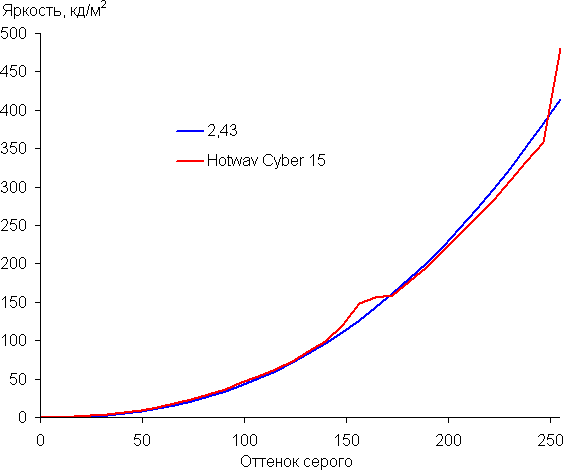
This device uses aggressive dynamic brightness adjustment, which changes depending on the nature of the displayed image. Even on medium-dark images, the backlight brightness may decrease. This results in the dependence of brightness on hue (gamma curve) differing from the gamma curve for a static image, since measurements were taken with sequential display of gray shades on almost the entire screen. Therefore, tests such as contrast, response time and checking black illumination at angles were carried out using special templates with constant average brightness, rather than single-color fields. This non-switchable brightness correction can cause discomfort, reduces the visibility of gradations in shadows on dark images and worsens readability in bright light, since the backlight brightness on medium-bright images may be underestimated.
The color gamut is slightly different from sRGB.
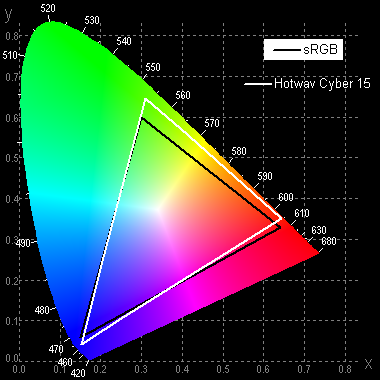
The spectra show that the matrix filters mix the components with each other to a moderate degree:
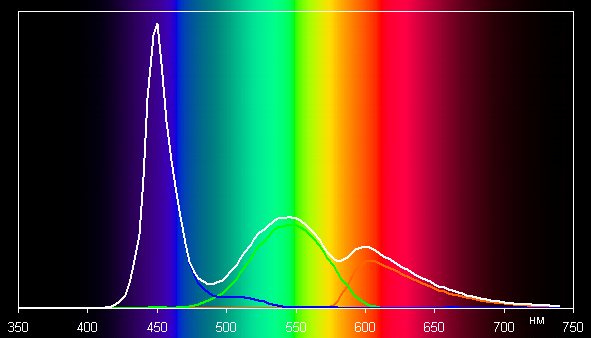
The grayscale balance is average, as the color temperature is significantly higher than the standard 6500 K, although the deviation from the blackbody spectrum (ΔE) remains relatively low — below 10 units. The color temperature and ΔE change slightly from shade to shade, which has a positive effect on the visual assessment of the color balance. The darkest areas of the grayscale can be ignored, since the color balance is less important in them, and the measurement error of color characteristics at low brightness is large.
This device does not seem to support DisplayPort Alt Mode for USB Type-C, which limits the ability to output images and sound to external devices via USB.
So, let's summarize: the screen does not have a very high maximum brightness (up to 490 cd / m²), but has excellent anti-glare properties, which allows you to use the device outdoors even in sunny weather. In complete darkness, the brightness can be reduced to a comfortable level (up to 20 cd / m²). The automatic brightness adjustment mode can be used, but it does not work quite adequately. Among the advantages of the screen, we can note the absence of an air gap in the layers and flickering, high contrast (1300: 1) and good uniformity of the black field. The disadvantages are low black stability when deflecting your gaze and aggressive, non-disconnectable dynamic brightness adjustment. Despite the importance of the characteristics for this class of devices, the quality of the screen is not outstanding.
Camera
The Hotwav Cyber 15 smartphone is equipped with a main camera with a Samsung HP3 Isocell sensor with a resolution of 200 MP. There is also a 24-megapixel night vision camera that allows you to take photos in complete darkness. For selfies and video calls, a front camera with a Sony sensor with a resolution of 32 MP is used.
The main camera takes photos at 16 MP by default thanks to pixel binning, but full 200 MP resolution is also available. However, shooting in this mode does not provide a significant gain in detail, so using it is not recommended.
The overall quality of the photos leaves much to be desired. The camera tries to compensate for low detail with aggressive sharpness processing, which leads to a deterioration in quality. Image clarity drops noticeably towards the edges of the frame, the dynamic range is limited, overexposure often occurs, and HDR can make a bright day look cloudy. Noise can appear even in the shadows.
Examples of photos taken with the main camera in auto mode:
Only digital zoom is used here, which would seem to provide acceptable quality at 3x zoom due to the high resolution. However, the camera applies strange processing, resulting in such pictures becoming blurry and illegible, without any new details. The reason why the smartphone offers to save the results of 3x zoom in 200 MP resolution remains a mystery. It is better to avoid using this mode, especially if you plan to view the pictures in the dark.
The 24-megapixel night vision camera does a pretty good job of taking pictures in complete darkness. For an off-road smartphone, this can be a very useful feature.
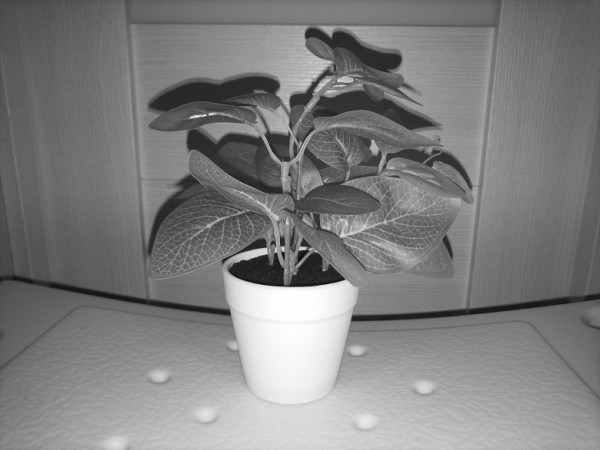
The maximum video resolution is 2.5K (1440p) at 30 fps. It is not possible to achieve 60 fps, even if you reduce the resolution to 1080p. The video quality remains basic.
Telephone and communications
The smartphone supports most mobile networks up to 4G, two Wi-Fi 5 and Bluetooth 5.1 bands, as well as NFC. There is no support for 5G and e-SIM. In the Moscow region, the device works confidently in wireless networks, maintaining a stable connection and quickly restoring the connection after a break. All the necessary sensors, including a gyroscope, are present.
The single-channel satellite navigation module works with GPS, GLONASS, BDS and Galileo. Satellites are found quickly during a cold start, and the positioning accuracy is high.
The speaker provides sufficient volume and clarity of the interlocutor's voice. The vibration call is rather rough and may not be noticeable enough through the thick rubber case.
Software and multimedia
Hotwav Cyber 15 runs on Android 13, but with a customized shell that does not have a big name. The system includes well-known utilities such as DuraSpeed, which can unload background applications from memory, which is worth considering when using.
On the left side of the device is a customizable button that can be programmed to perform three different functions, such as launching applications, turning on the flashlight or taking screenshots. Numerous gestures popular among Chinese users are also supported.
Performance
The Hotwav Cyber 15 smartphone is equipped with an eight-core Mediatek Helio G99 processor and a Mali-G57 MC2 graphics chip. It has 12 GB of RAM, which can be further expanded with a virtual 12 GB, as well as 256 GB of built-in storage, with the ability to install a memory card. External devices are connected via a USB Type-C port with USB OTG support.
The Mediatek Helio G99 processor was introduced on May 23, 2022 and is manufactured using a 6-nanometer process technology. Although this is a two-year-old model with entry-level performance, the smartphone scores less than 400 thousand points in AnTuTu. The interface does not work quite smoothly, but rather abruptly, and applications are slow to install. The processor is enough for basic tasks, but its power is not enough for recording 4K video, shooting at 60 fps or demanding games.
Testing in complex tests AnTuTu and GeekBench:
We have collected all the smartphone test results, conducted on the latest versions of popular benchmarks, in tables for easy comparison. The table also includes other devices from different segments, tested on the same versions of benchmarks, to clearly evaluate the obtained data. However, due to the impossibility of combining the results from different versions of benchmarks in one comparison, some current models that were tested on previous versions of programs are not presented in this comparison.
| Hotwav Cyber 15 (Mediatek Helio G99) | Huawei nova 12s (Qualcomm Snapdragon 778G) | OnePlus Nord 3 5G (Mediatek Dimensity 9000) | Realme 12 Pro+ (Qualcomm Snapdragon 7s Gen2) | Redmi Note 13 Pro+ (Mediatek Dimensity 7200 Ultra) | |
|---|---|---|---|---|---|
| AnTuTu (v9.x) (bigger is better) | 361962 | 546957 | 789188 | 576685 | 669583 |
| GeekBench 6 (bigger is better) | 715/1895 | 996/2453 | 1077/3175 | 894/2801 | 1126/2643 |
Testing the graphics subsystem in GFXBenchmark gaming tests:
| Hotwav Cyber 15 (Mediatek Helio G99) | Huawei nova 12s (Qualcomm Snapdragon 778G) | OnePlus Nord 3 5G (Mediatek Dimensity 9000) | Realme 12 Pro+ (Qualcomm Snapdragon 7s Gen2) | Redmi Note 13 Pro+ (Mediatek Dimensity 7200 Ultra) | |
|---|---|---|---|---|---|
| GFXBenchmark Aztec Ruins OpenGL (Onscreen, fps) | 16 | 34 | 96 | 35 | 50 |
| GFXBenchmark Aztec Ruins Vulkan (Onscreen, fps) | 14 | 38 | 105 | 39 | 55 |
| GFXBenchmark Car Chase ES 3.1 (1080p Offscreen, fps) | 15 | 33 | 79 | 30 | 43 |
| GFXBenchmark Manhattan ES 3.1 (1080p Offscreen, fps) | 25 | 56 | 151 | 54 | 74 |
| GFXBenchmark T-Rex (1080p Offscreen, fps) | 62 | 133 | 293 | 122 | 191 |
Testing in browser cross-platform tests:
| Hotwav Cyber 15 (Mediatek Helio G99) | Huawei nova 12s (Qualcomm Snapdragon 778G) | OnePlus Nord 3 5G (Mediatek Dimensity 9000) | Realme 12 Pro+ (Qualcomm Snapdragon 7s Gen2) | Redmi Note 13 Pro+ (Mediatek Dimensity 7200 Ultra) | |
|---|---|---|---|---|---|
| Google Octane 2 (bigger is better) | 24608 | 24923 | 29390 | 30529 | 39276 |
| JetStream (bigger is better) | 79 | 67 | 76 | 85 | 79 |
Memory speed test results:
Heat
We test for performance degradation when heating using the Burnout Benchmark program, which allows you to load the CPU, GPU and NPU:
| Load on | Heating performance, as a percentage of maximum |
|---|---|
| CPU | 56% |
| GPU | 77% |
| NPU | 28% |
Battery life
The Hotwav Cyber 15 smartphone has a larger 6280 mAh battery, but, as is often the case with Chinese devices, the real battery life may differ significantly from the stated one. In our testing, the device did not even reach the average level of battery life.
The tests were conducted at a standard power consumption level without using the power saving features present in the device. The testing conditions included the minimum comfortable brightness level (about 100 cd/m²). We conducted the following tests: continuous reading in Moon+ Reader (with the standard light theme), endless playback of HD video (720p) and the game Injustice 2 with automatic graphics settings.
| Battery capacity | Reading mode | Video mode | 3D gaming mode | |
|---|---|---|---|---|
| Hotwav Cyber 15 | 6280 mAh | 17:00 | 15:00 | 7:00 a.m. |
| Tecno Spark 20 Pro+ | 5000 mAh | 18:00 | 14:00 | 6:00 a.m. |
| Vivo V30 | 5000 mAh | 23:00 | 21:00 | 8:00 a.m. |
| Vivo V29 | 4600 mAh | 21:00 | 19:00 | 8 h 30 min |
| Infinix GT 10 Pro | 5000 mAh | 20:30 h. | 18:00 | 8 h 30 min |
| Tecno Camon 20 Pro 5G | 5000 mAh | 19:00 | 16:00 | 7:00 a.m. |
| Vivo V27 | 4600 mAh | 25:00 p.m. | 19:00 | 7:00 a.m. |
All data provided represents the best results obtained under «ideal» testing conditions, including the absence of SIM cards. Any changes in real-world conditions will likely result in a decrease in these figures.
Charging the smartphone from the included power adapter takes 1 hour and 50 minutes to reach 80%. After that, the charging process slows down, and the device can remain at this charge level for hours. Reconnecting the cable can increase the charge slightly, but we were unable to reach 100%. Similar technology is often used in laptops to extend battery life, but it is always done with the consent of the user. In this case, such an option is not provided.
Summary
Based on the results of testing, we can say that the Hotwav Cyber 15 is a typical Chinese smartphone from the second, if not third, echelon. It performs basic tasks, works stably and does not cause failures. However, many of the advertised characteristics, such as 200 MP of the main camera and high battery capacity, do not live up to expectations: the quality of shooting and autonomy are below average. The platform does not deserve special attention either.
The only thing that can attract attention to this smartphone is its «body kit»: the case is protected by a thick layer of rubber, which gives it a durable look, there is an additional screen on the back, and several quick actions can be assigned to a special button. It is not known how useful such a device will be on trips to nature, but its price is quite consistent with the declared capabilities.

